Every social entrepreneur knows that it is not only the ability to maximise economic outcomes that makes a business competitive, but also the ability to optimise for social and environmental impact. After all, taking sustainability seriously in business is not only good for the planet, it can also be a strong value driver and promote innovation.
However, it is often difficult to apply suitable sustainable business models and strategies in practice. The adoption of appropriate tools for product and business model innovation and corporate sustainability management can help overcome this challenge. In this post I show why this is the case, and I present 6 tools for sustainable innovation and sustainability management:
- The Impact Canvas
- The Sustainable Business Model Canvas
- The Sustainable Business Innovation Game
- The Digital Product Ethics Canvas
- The Sustainability SWOT Analysis
- The Sustainability Balanced Score Card

Why should design tools be a solution?
Why is sustainability often so hard to take into account in business? Apart from a lack of effective government incentives and sufficient consumer demand, there are often several internal business challenges hindering progress:
- Mind Set: Executives and employees often still assume that taking sustainability seriously requires economic sacrifices (read here why this assumption is misguided)
- Incentives: Executives and employees are often not sufficiently incentivised to take sustainability into account and clear sustainability related KPIs and OKRs are missing
- Complexity: Implementing a sustainability strategy across all company departments, hierarchies, functions and suppliers is a challenging task
- Tools: There is a lack of tools and processes to implement sustainable business practices into daily operations
For example, sustainability is often still considered as something expensive that would just generate more costs. Some entrepreneurs see sustainability as a mere marketing or CSR effort to compensate for unsustainable business practices, not a strategy to transform the business itself. Many professionals who are in positions to create significant sustainability effects through better product and business model design are unaware of their “power”.
Equally concerning, many entrepreneurs and employees only associated activities such as “saving printer paper” and “saving electricity” in the own business with sustainability – not the impact the product and services of the business would generate during the use-phase. A shift of the focus from only business internal considerations (Horizon 1) to a more holistic approach which would include the impact of the products during the use phase (Horizon 2) is needed.

What if it was possible to encourage this shift of focus by promoting the use of simple design tools? For example by changing the product and business model innovation process to incorporate the aspect of social and environmental sustainability?
What tools for Sustainable Innovation need to accomplish?
To create a shift of the attitude and incentivise businesses and entrepreneurs to take sustainability more seriously, we need tools which fulfil the following requirements:
- They are easy to use, familiar and can represent a common language
- They address the ‘why are we doing this’ question and help shape a new mind-set
- They clarify the links between sustainability, business opportunities and risk
- They script simple guidelines that are specific, achievable and motivational and can be realistically incorporated into day-to-day practice
- They are applicable at different levels of hierarchy (from CFOs to UX designers)
- They incentivise collaboration with other stakeholders, such as regulators, competitors and the supply chain
- They are useful even for businesses with little experience in sustainable business practice and offer the potential for standardisation
- They link overall strategic sustainability goals to the goals of individual business units
Ideally, these tools can contribute to a shift of mindset from “Lets compensate for our unsustainable business practices” toward “Lets fundamentally change the way we do business”. They can change the attitude towards sustainability from “Oh no, there will be financial sacrifices” toward “Let’s see if we can capture new business opportunities”.

When I first started thinking about how to accomplish all these difficult tasks, I thought about the famous Business Model Canvas (BMC) popularised by Osterwalder. The simplicity of the BMC enabled the tool to see widespread adoption in the start-up community, in companies and in consultancies. And the canvas layout was crucial for this success.
Over the past 5 years, I therefore developed a range of new tools and modified a number of existing tools for the purpose of promoting sustainable innovation and management with companies and entrepreneurs. Based on user feedback and the advice by UX experts the tools are continuously improved, and they can be applied along three principle stages of the innovation process:
- Strategy Analysis & Development
- Product & Service Development
- Performance Management
Let’s have a look at the individual tools.
Tools for Sustainable Product and Business Model Innovation
Tools for Product and Business Model Innovation are particularly useful to promote the adoption of a sustainability mind set in companies. This is because they are typically used at the very beginning of the product development process, which is where companies still can fundamentally change the product and thereby influence social and environmental outcomes.
The Impact Canvas
Two of the most common problems I encountered when talking with entrepreneurs and companies were that product and service designers either a) did not consider sustainability at all or b) only looked at positive effects.

The Impact Canvas is a great tool to address this problem. The Impact Canvas incentives sustainable product and business model design by enabling designers identify and optimise positive and negative effects of the respective business activities. This way, the Impact Canvas can help generate the first input for a realistic impact assessment.
The Impact Canvas is structured along three levels, which take into account all potential impact categories at the technology level, the application level and the systems level. A major advantages of this tool are that it balances a thorough methodology with ease of use tool, and that it can be used as an input generator for the Sustainable Business Model Canvas.
Most importantly, however, the SIC is an ideal tool to incentivise "honest accounting" by preventing designers from ignoring the potential negative effects of their products and business models, a common tendency based on out susceptibility to confirmation biases.
The Sustainable Business Model Canvas
One of the reasons for the success of the classic Business Model Canvas (BMC) is that it forces users to think about the most relevant aspects of a business model and provides a simple to use framework and common language for business model innovation.

Nevertheless, the classic Business Model Canvas misses aspects that are crucial for sustainable product and business model innovation, related to e.g. the end-of-life, subsidisation and negative externalities. In order to promote sustainable innovation, product and business designers need to be reminded about these aspects as early as possible in the design process.
For this reason, the Sustainable Business Model Canvas includes several new fields related to the impact of the product and business model. By thinking about sustainability aspects from the start, users can maximise the sustainability impact and generate more innovative business models and products. At the same time, the Sustainable Business Model Canvas retains all the advantages of the classic BMC.
The Sustainable Business Innovation Game
To ease the adaptation of the Sustainability Impact Canvas and the Sustainable Business Model Canvas, I have developed the Sustainable Business Model Innovation Game. The game is based around 38 business model cue cards. Each cue card shows a summary of a sustainable business model that has already been successfully applied in practice. Users can easily identify typical positive and negative impacts of the respective business model and learn about the model through a real world example.

The Sustainable Business Model Innovation Game is best suited for teams of 2-10 people. The group can then be divided into teams, and each team receives an equal share of the sustainable business model cue cards. Going through each cue card, the teams discuss the possibility of the respective business model for the product or business in question, and then jointly decide whether aspects of the model can be successfully applied.
Positive and negative benefits of the business model are included in the respective sections of the SBMC or the SIC, and the final result can then be challenged by the whole group.
The Sustainable Business Innovation Game, the required business model cue card as well as a detailed tutorial for its use can be downloaded here.
The Digital Product Ethics Canvas
Digital products and services can not only benefit our lives, they can also harm us. This is because social media and consumer-facing mobile companies are often under a lot of pressure to maximise product usage and growth. This can lead to negative consequences for individuals and society at large.

Of course, companies do not want to design digital products that harm users and societies. However, the necessity to operate within the attention economy almost guarantees that that they will. If a user’s attention (or click) is the currency investors and shareholders measure the companies’ success in, then the company will have to strive to optimise for this KPI.
Fortunately, this issue is now receiving increasing attention, spearheaded by organisations such as the Center for Humane Technology. With the help of several leading Berlin-based UX designers and inspired by the Time Well Spent Movement initiated by Tristan Harris, I therefore developed the Digital Product Ethics Canvas.
The Digital Product Ethics Canvas is aimed first and foremost at Product Managers, UX Designers and Information Architects. This is because we are convinced that these professionals are in the perfect position to promote bottom-up change in corporates and start-ups. Using the Canvas, these professionals might, at a minimum, raise awareness amongst senior management to risks of digital products to individuals and society, and in the best case, minimise their negative impact by following the Canvas Instructions.
Established Tools for Sustainability Strategy Analysis and Performance Management
Apart from product innovation, the areas of strategy analysis and performance measurement are also very important for the promotion of a shift of attitude towards sustainability. Two familiar tools in particular can be useful to promote this shift.
The Sustainability SWOT Analysis
The Sustainability SWOT Analysis (sSWOT) is based on the standard SWOT, which is a very well-known and established business tool, and the work by Metzger et.al. The sSWOT helps companies identify and assess environmental risks and to drive action on environmental challenges. This way, the sSWOT can also be useful to initiate new product and business ideas.

Furthermore, the sSWOT helps individuals to engage and motivate colleagues and is useful to work across internal departments as well as with suppliers, customers and other stakeholders. This way, the sSWOT can be used to create long-term sustainable business value.
The Sustainability Balanced Scorecard
The Sustainability Balanced Scorecard is based on the work by Schaltegger & Lüdeke-Freund. The sBSC allows for sustainability performance measurement and related management approaches. It provides executives with a comprehensive framework that translates a company’s strategic objectives into a coherent set of performance measures.

Much more than a measurement tool, the sBSC is a management system that can motivate breakthrough improvements in such critical areas as product, process, customer, and market development. Due to the ability of the sBSC to integrate different business and information perspectives it its ideally suited to enable a mainstream business to approach the challenges of corporate sustainability.
The path to widespread implementation
Systematically applied, simple tools can make a surprisingly big difference and encourage entrepreneurs and businesses to consider sustainability related aspects in product innovation processes and daily business practice. Using these tool-based methodologies, it is possible to generate significant sustainability effects in product- and business model development, whilst at the same time generating tangible business upsides and drive innovation.
Of course, despite their effectiveness, tools for sustainable innovation are not enough to address the challenge of sustainability in the business world. It is essential that policy makers strongly incentivise businesses to internalise negative externalities by developing clear, consistent and fair regulation not only on emission targets, but also on resource usage, both on a national and global level. In addition, policy makers need to incentivise the transition towards the circular economy and begin to implement effective educational polices to ‘nudge’ sustainable consumer behaviour, i.e. by making consumed resources more visible and developing new narratives to foster widespread concern for the environment among consumers.
Nevertheless, whilst change towards a sustainable economy can only result from simultaneous action from policy makers, consumers and businesses, individual entrepreneurs and businesses can and should take the initiative, and lead with a commitment to sustainable innovation.
****
Dr. Robert Gerlach first started developing tailored methods for sustainable innovation and sustainability management during his time as a management consultant, and has since then developed the methods further whilst working in the Berlin startup world and as a lecturer at Steinbeis University Berlin.

